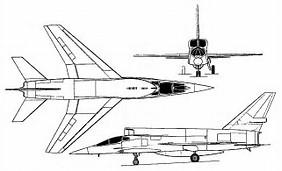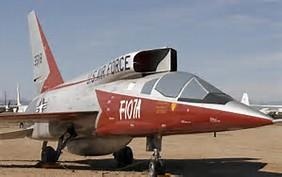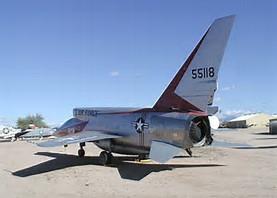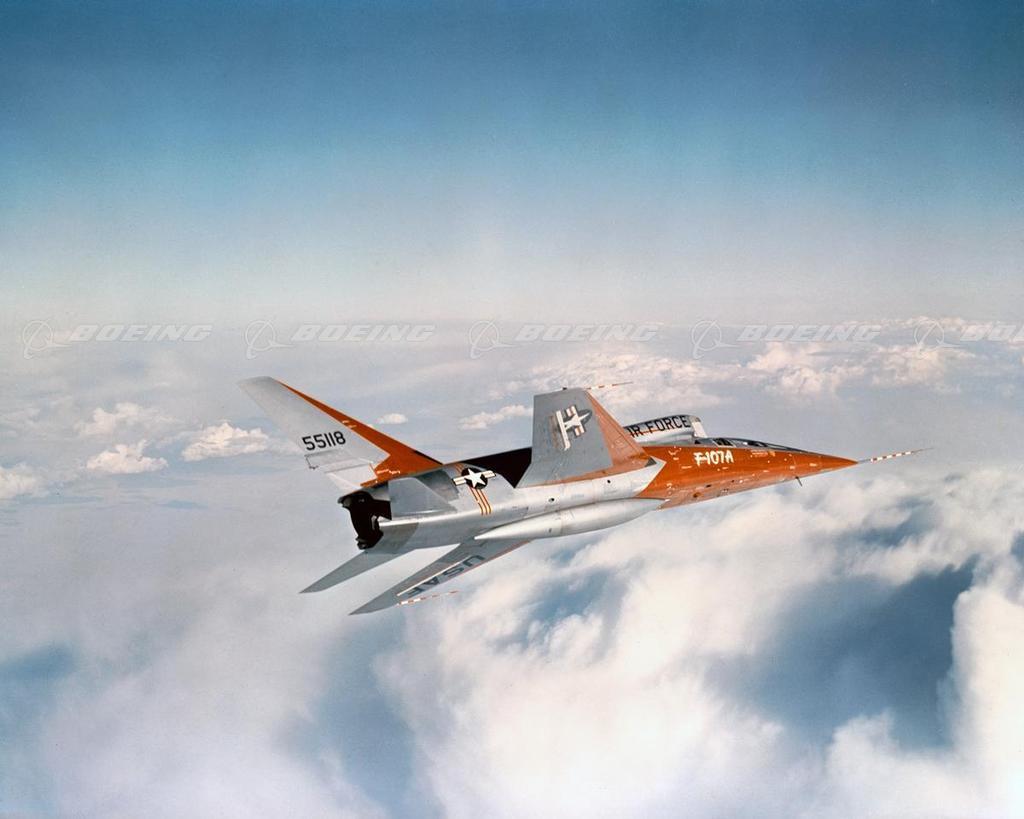S'sonic
Stealth
Menu
A free template by Lucknowwebs.com for WYSIWYG WebBuilder 8
Powered by Sispro1-S
Nigel G Wilcox
Paragon Of Space Publication
© Copyright Reserved - United Kingdom
Ideal Screen Composition 1024 x 768
SITEMAP
PSEUDO SCIENCE
SCIENCE RESEARCH
ABOUT
Desk
Supersonic
Stealth
Study
Menu
MAIN INDEX
Fastest Air Planes
Space
Transport
Menu
F-107 Ultra Sabre
North American Aviation's entry in a United States Air Force tactical fighter-bomber design competition of the 1950s. The F-107 was based on the F-100 Super Sabre, but included many innovations and radical design features, notably the over-fuselage air intakes. The competition was eventually won by the Republic F-105 Thunderchief, and most of the F-107 prototypes ended their lives as test aircraft. One is on display at the National Museum of the United States Air Force and a second at Pima Air and Space Museum.
Maximum speed: 1,432 km/h (890 mph) Range: 2,414 mi Maiden flight: 10 Sep 1956 Length: 61.84 ft Wingspan: 36.58 ft Passengers: 1
General characteristics
Crew: one
Length: 61 ft 10 in (18.85 m)
Wingspan: 36 ft 7 in (11.15 m)
Height: 19 ft 8 in (5.89 m)
Wing area: 376 ft² (35 m²)
Empty weight: 22,696 lb (10,295 kg)
Loaded weight: 39,755 lb (18,033 kg)
Max. takeoff weight: 41,537 lb (18,841 kg)
Powerplant: 1 × Pratt & Whitney YJ75-P-9 turbojet, 24,500 lbf (109 kN)
Performance
Maximum speed: Mach 2+ (1295 mph)
Range: 2,428 mi (2,109 nmi, 3,885 km)
Service ceiling: 53,200 ft (16,220 m)
Rate of climb: 39,900 ft/min (203 m/s)
Wing loading: 106 lb/ft² (516 kg/m²)
Thrust/weight: 0.62
Armament
Guns: 4x 20mm Pontiac M39 cannon OR 1x 20mm, 6 barrel M61 Vulcan autocannon
Bombs: 10,000 lb (4,500 kg) on 5 hardpoints; 2 under each wing, 1 semi-recessed ordnance station under fuselage centerline. Wide variety of ordnance, including tactical nuclear weapons
Role: Fighter-bomber
National origin: United States
Manufacturer: North American Aviation
First flight: 10 September 1956
Retired: 25 November 1957
Status: Canceled
Primary users: United States Air Force
NACA
Number built: 3
Program cost: US$105.8 million
Developed from: North American F-100 Super Sabre



The F-107 was one of the Century Series fighters that never made it, not due to any fault of the aircraft but due to the politics of the day. Starting life as an extension of the F-100, the number of changes and improvements meant it developed a life (all but short) of its own as the F-107A.
Considering the early difficulties encountered by other 'century series' fighters, the YF-107A was relatively troublefree and might well have played an important role in the Tactical Air Command. But despite good performance, the three YF-107As were soon relegated to permanent test status. Features of the aircraft warranting further evaluation included a flush centre-line fuel tank mounted in the indented fuselage bottom, spoilers on the wing surface instead of ailerons, and a one-piece all-moving rudder, later adopted on the A-5 Vigilante attack bomber.
Only three F-107s were built and flight tested, the first flight being made on September 10, 1956 with the second and third aircraft following shortly after. The F-107 was cancelled in favour of the F-105 early in 1957. Originally designated F-100B, it was an all-weather fighter-bomber version of the F-100 powered by a 10660kg thrust Pratt & Whitney YJ75-P-9 turbojet fed via an air inlet above and behind the cockpit, positioned in a way to create space in the nose for radar. Design work began in June 1953 and a year later the USAF ordered nine aircraft (55-5118/5126), although only three were actually completed.
In 1955, the F-107 lost out to the Republic F-105 in a paper competition even though it had not yet flown and its competitor did not, then, have all-weather capability. Thus, the future of the F-107 was already clouded on 10 September 1956 when Robert Baker made the first flight at Edwards AFB, California, in the first of three service-test YF-107As.
Considering the early difficulties encountered by other 'century series' fighters, the YF-107A was relatively troublefree and might well have played an important role in the Tactical Air Command. But despite good performance, the three YF-107As were soon relegated to permanent test status. Features of the aircraft warranting further evaluation included a flush centre-line fuel tank mounted in the indented fuselage bottom, spoilers on the wing surface instead of ailerons, and a one-piece all-moving rudder, later adopted on the A-5 Vigilante attack bomber. The first YF-107A eventually found itself in a scrap heap, the second is now on display at the Air Force Museum in Dayton, Ohio, and the third was lost in a crash landing while on loan to NACA.











